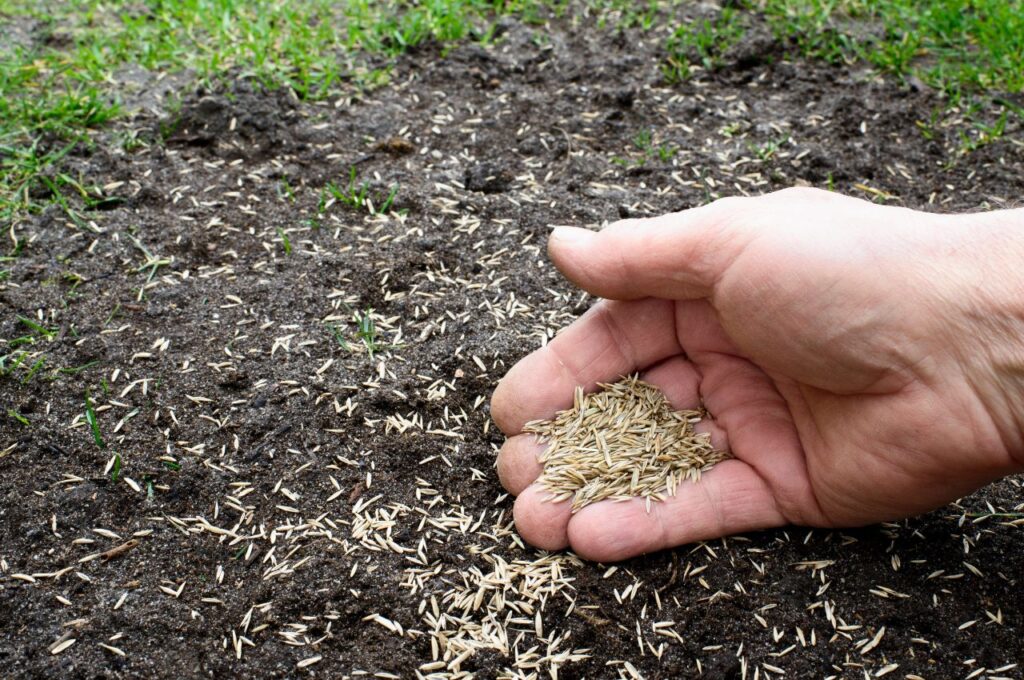The information in this article was provided by Gilba Solutions

After the summer the following 3 practices are NOT a good idea if you are overseeding in the autumn.
1. Aggressive scarification – when this is carried out stolons are removed. These act as subsequent ‘’growing points’ when you transition the ryegrass out in the following spring. Aggressive scarification removes 80-85% of the stolon buds. This then means that the only place the couch can grow back is from rhizome buds. Couch has more stolon growing points than rhizome per square metre.
2. Oversowing too late. This coupled with aggressive scarification damages the couch and means that when spring comes around the existing couch which has limited food reserves and struggles to transition back.
3. Oversowing too early, when the couch is still growing, allows the couch to grow back. Yes, we all know many venues are forced by
management to oversow early due to usage constraints but this point cannot be emphasized enough. When the couch grows back it is at the expense of limited food reserves in rhizomes, crowns and leaves even less available for spring transition back to couch. The end result is poor ryegrass establishment as the couch continues to compete with the oversown ryegrass and poor spring transition from a tired couch plant.
A rough guide oversow when the night time temperature is around 12°C. As mentioned previously many venues force an early overseed and so slowing down couchgrass can be very beneficial. Trinexapac ethyl sold under a variety of brand names such as Marvel 175 works well for achieving this but you MUST raise the mowing height prior to application. Do NOT scalp the surface prior to applying trinexapac as this needs to be taken up by the plant. So a suggested scope of works is as follows bellow:
During mid-summer
- If thatch is 50mm or more vertically mow to remove aiming to carry this out no closer than 6 weeks prior to seeding to allow recovery.
35 days prior to seeding
- Cease all N applications and increase K
12 days before seeding
- Raise the mowing height by – 35-50%. Decrease irrigation by 25% to force the couch to store carbohydrates and also slow up growth. If you are going to apply a PGR carry on irrigating asusual.
5 days before seeding
- Now is the time to apply your PGR.
1 Day before seeding
- Mow the turf to its original height (same height as three weeks previously). This scalps the grass removing the upper leaves.
- Drop the height another 30-50% as this will in reality be the only decrease in height although you will have ‘’double scalped’’ the turf. The result is a semi upright stolon with one leaf on it. This makes it easier for the seed to get down to the soil plus more importantly the stolons will be in better condition for the spring. Using some of the smaller seed variety ryegrasses (such as Playoff 2) will also help with the success of seeding.
Day of Seeding
- Overseed in two directions. Drag a matt over the surface and roll if possible to agitate the top layer of soil and help plant the seed.
Next Day
- Set irrigation for light and frequent irrigations. No more then 6mm per day should be applied (depending on date seeding actually takes place (with 3-5 irrigation events over the day. Don’t irrigate past 4pm.
First Mow
- Mow the ryegrass when its 12-17mm in height with a cylinder mower
First Fertilisation
- Apply a starter after the first mowing
The information in this article was provided by Gilba Solutions

